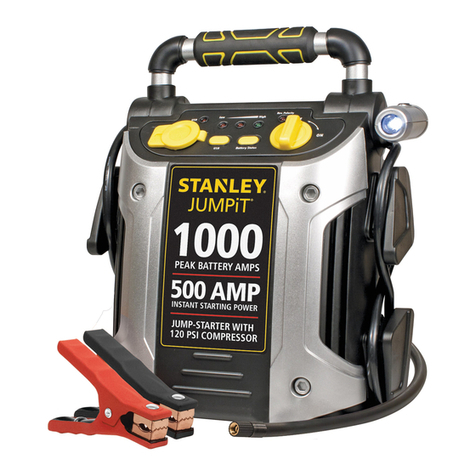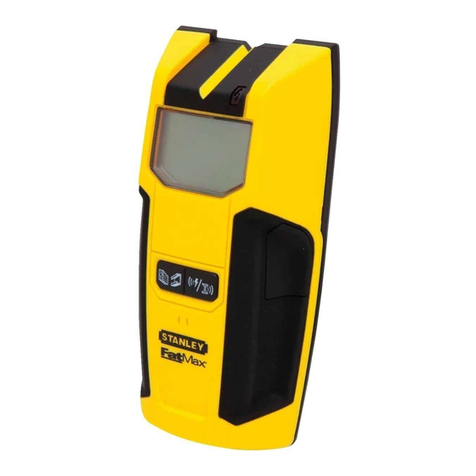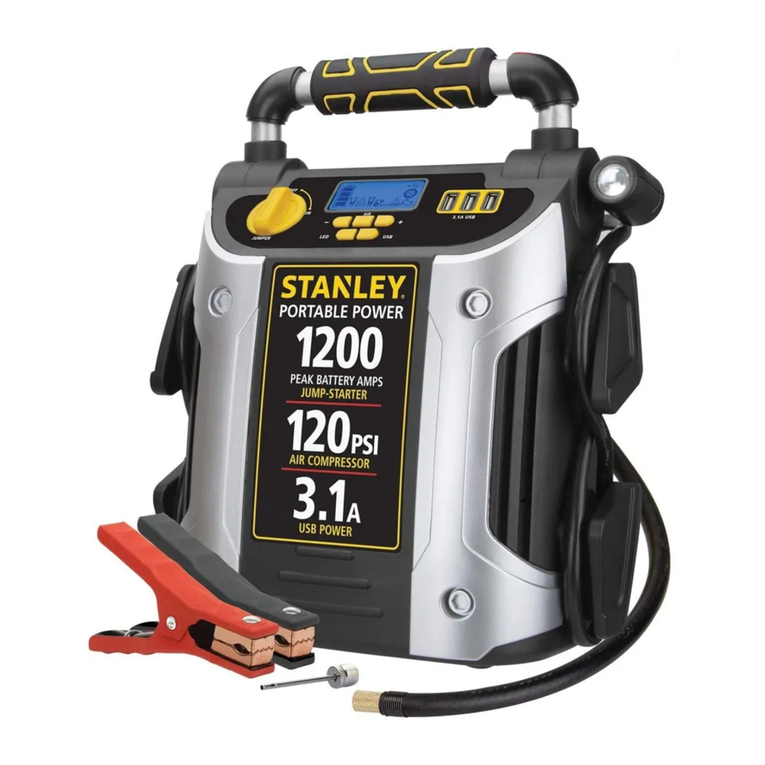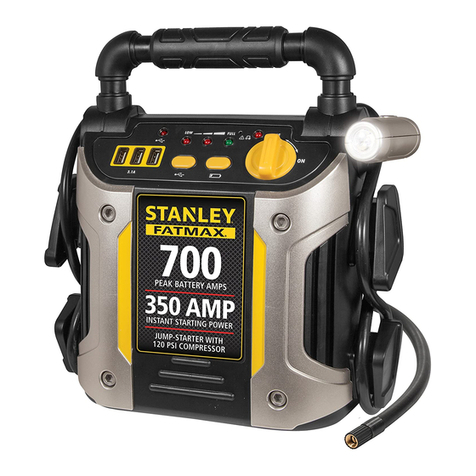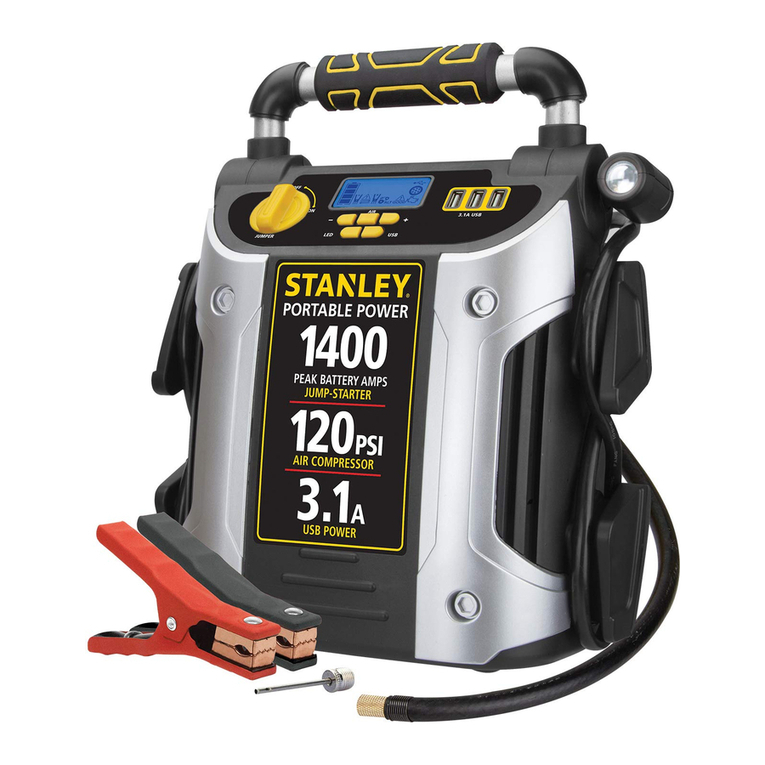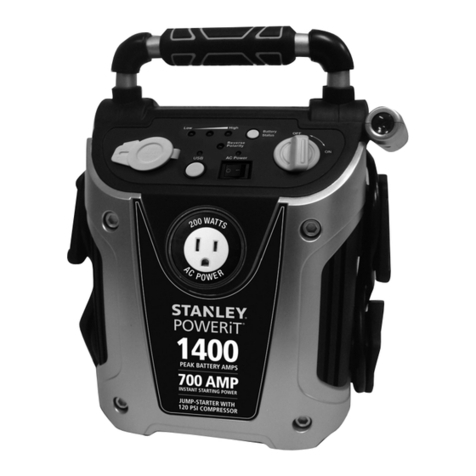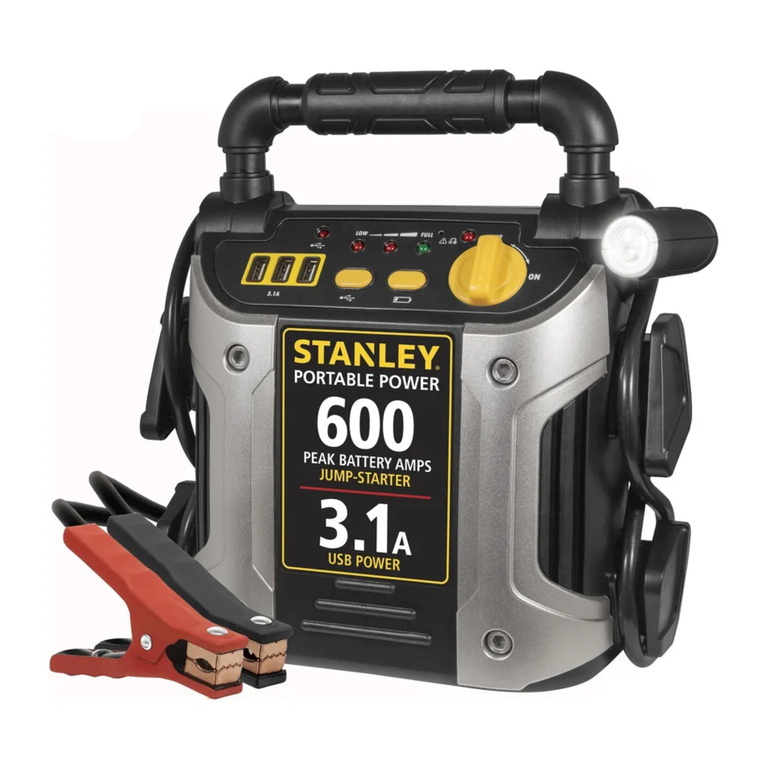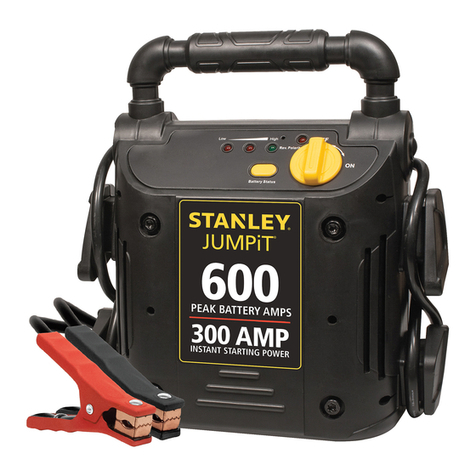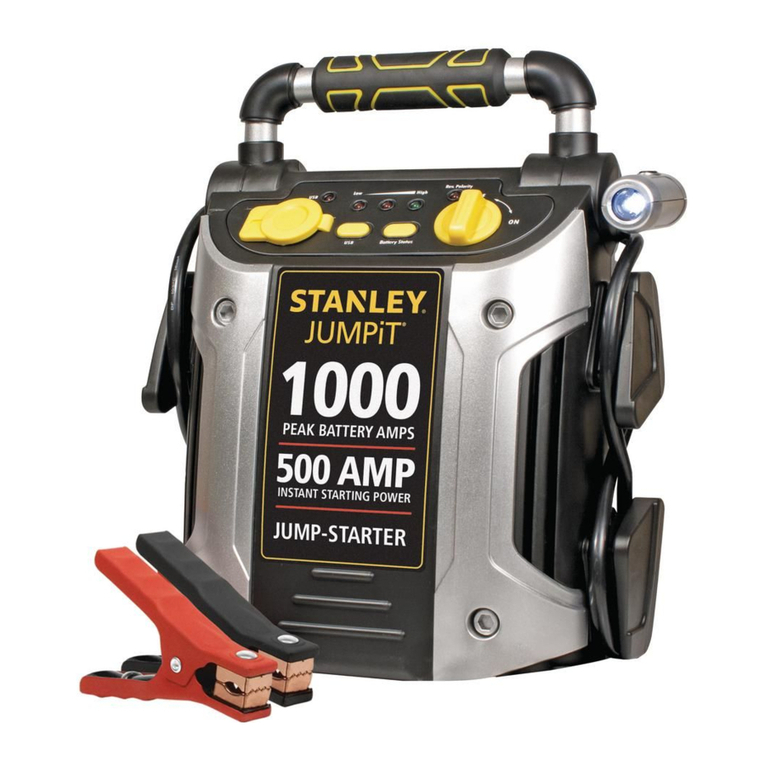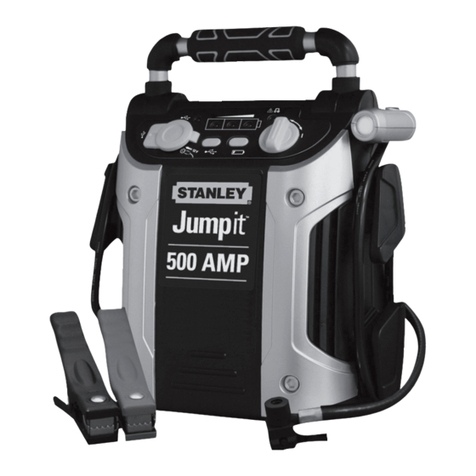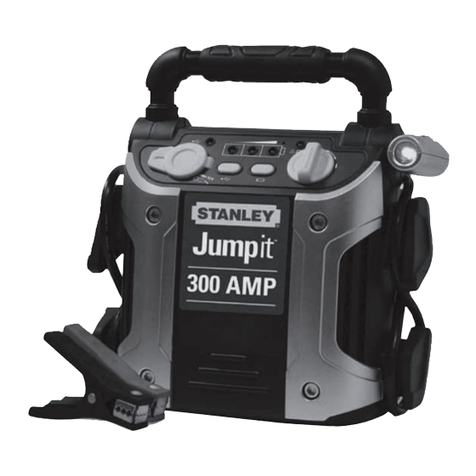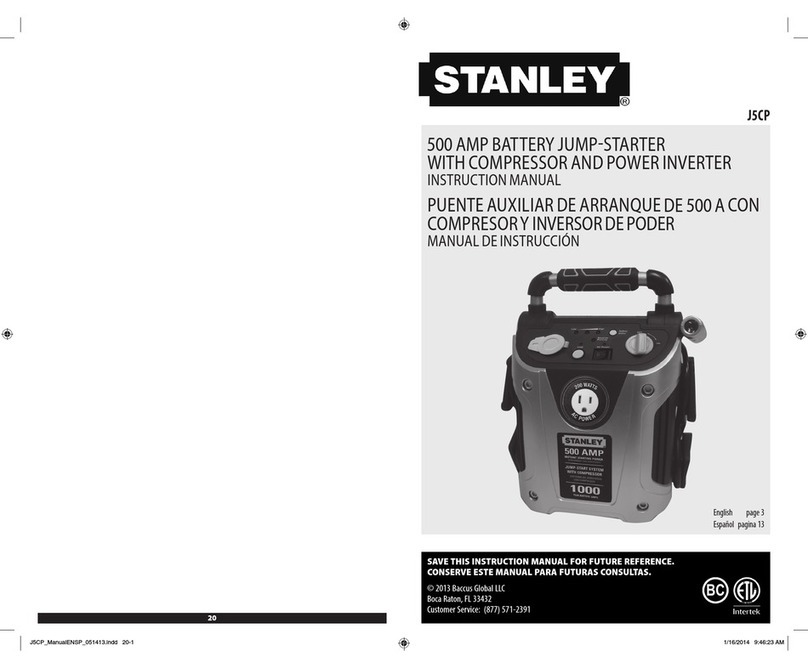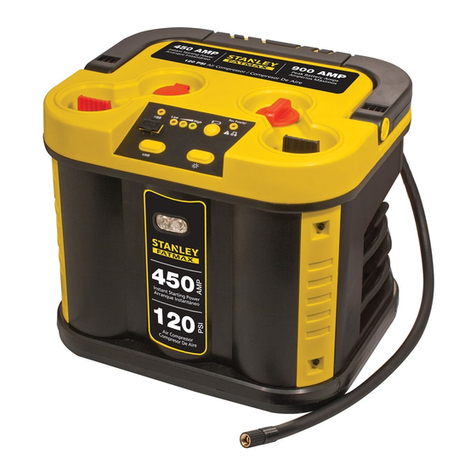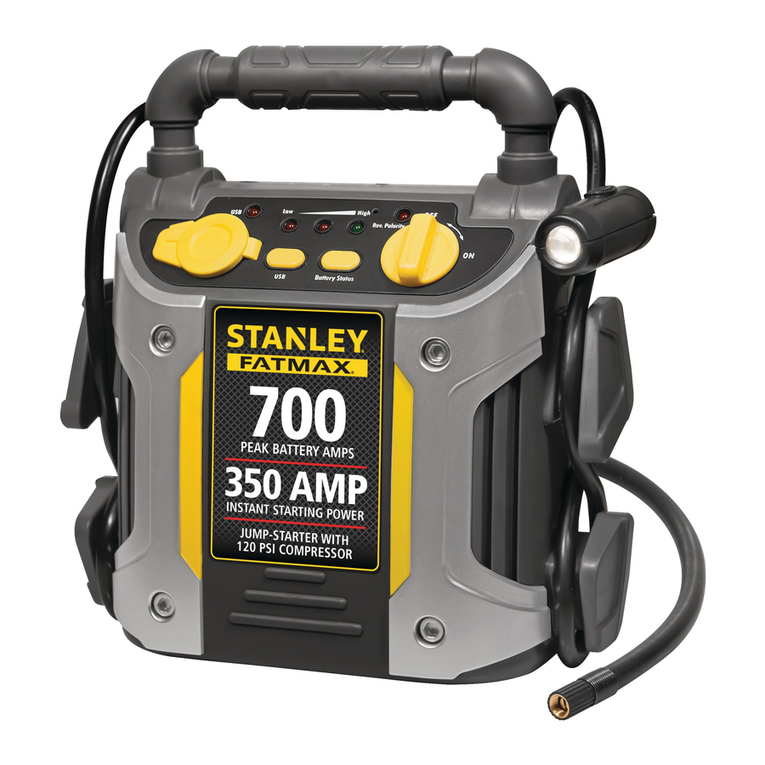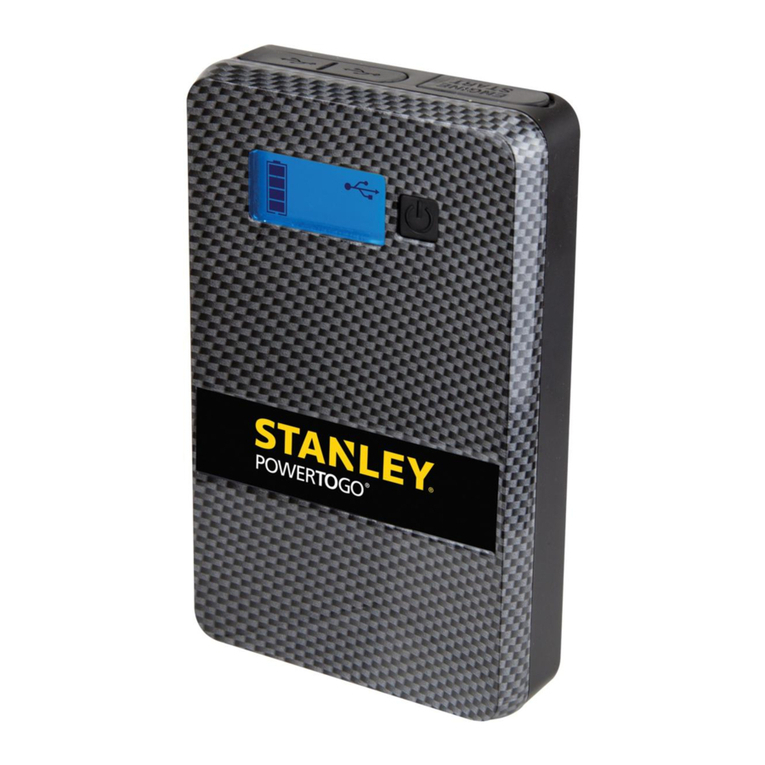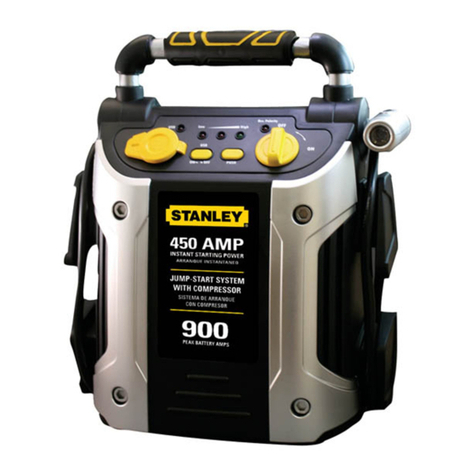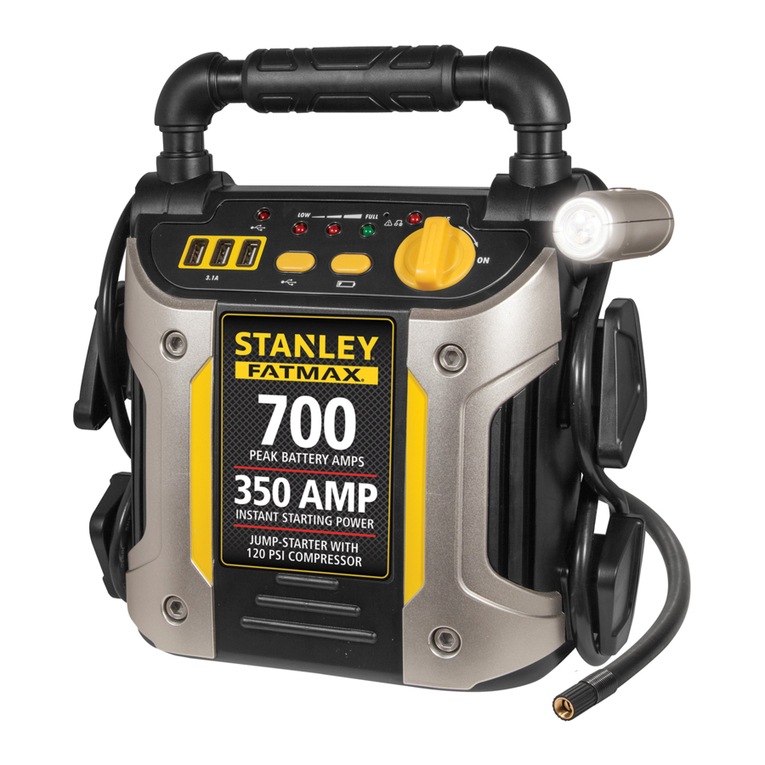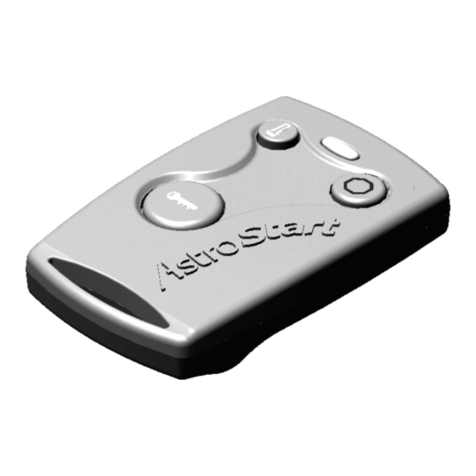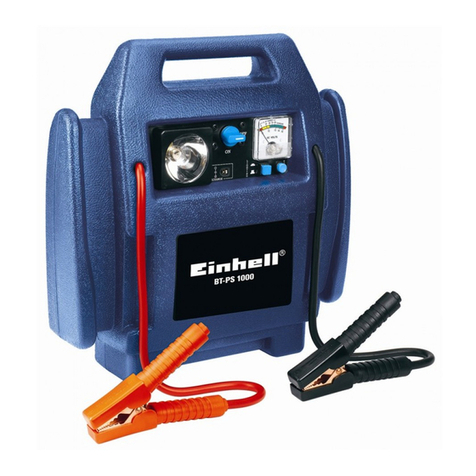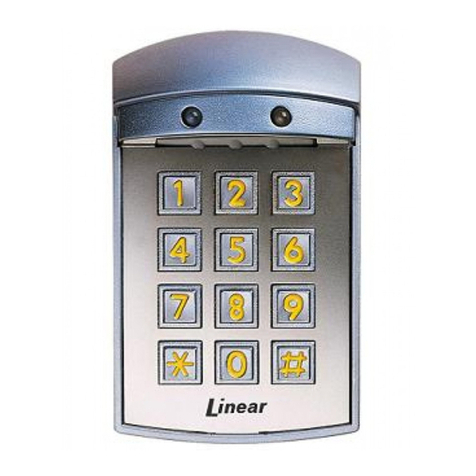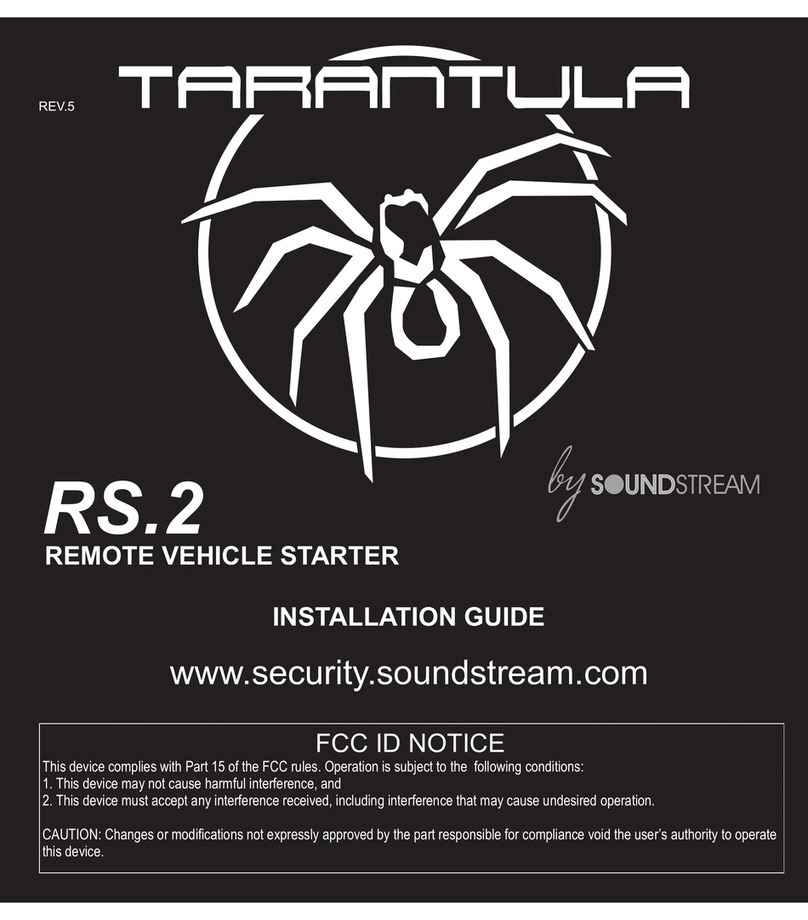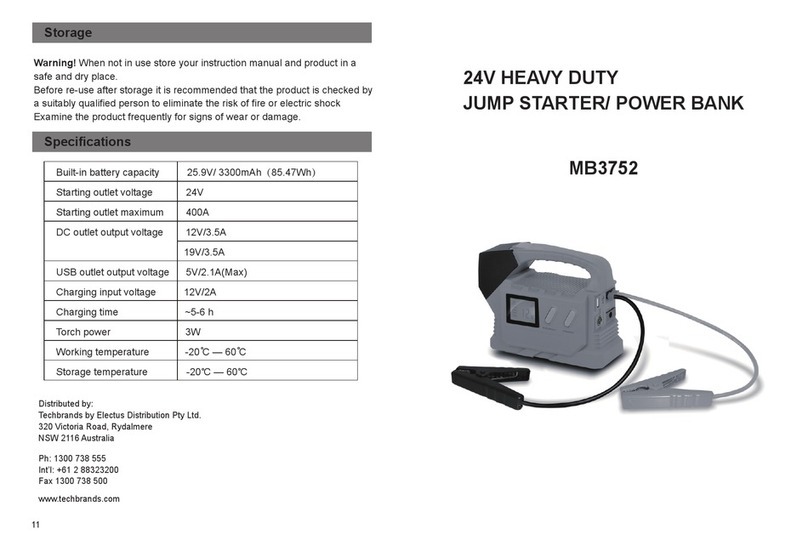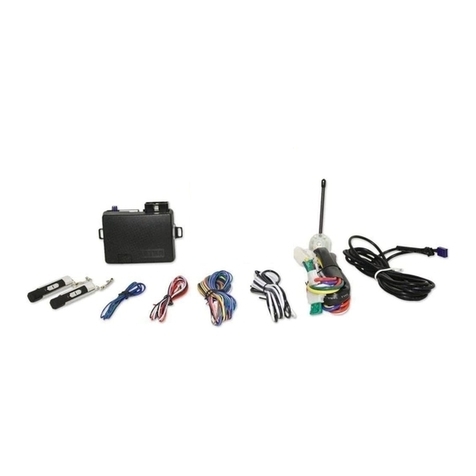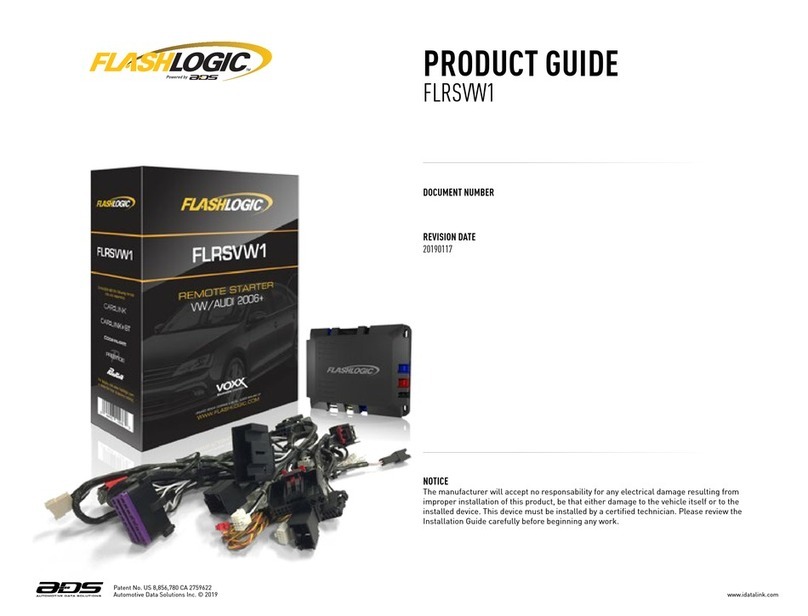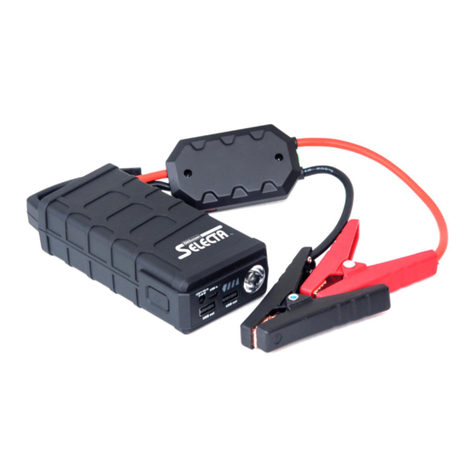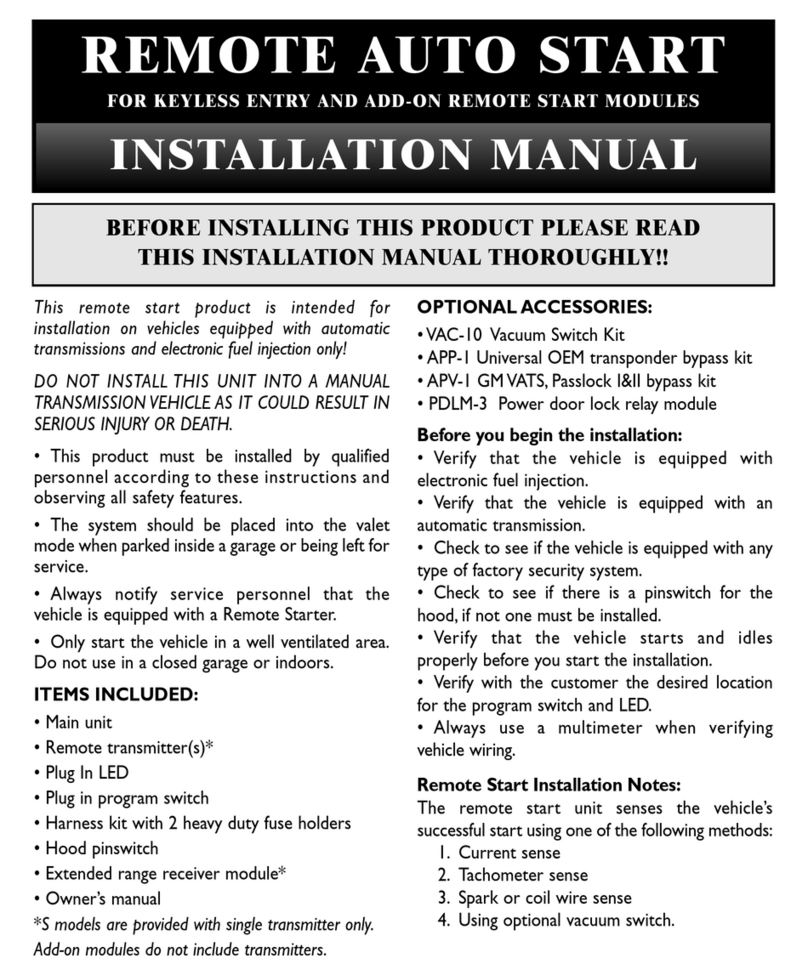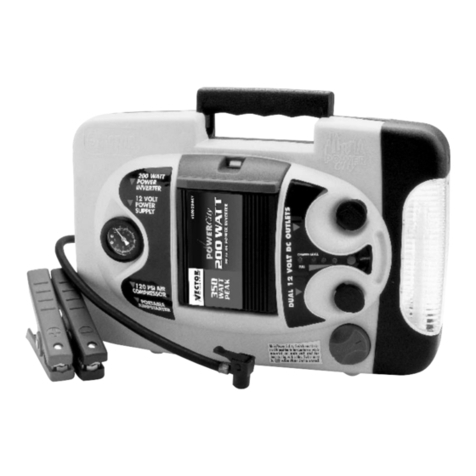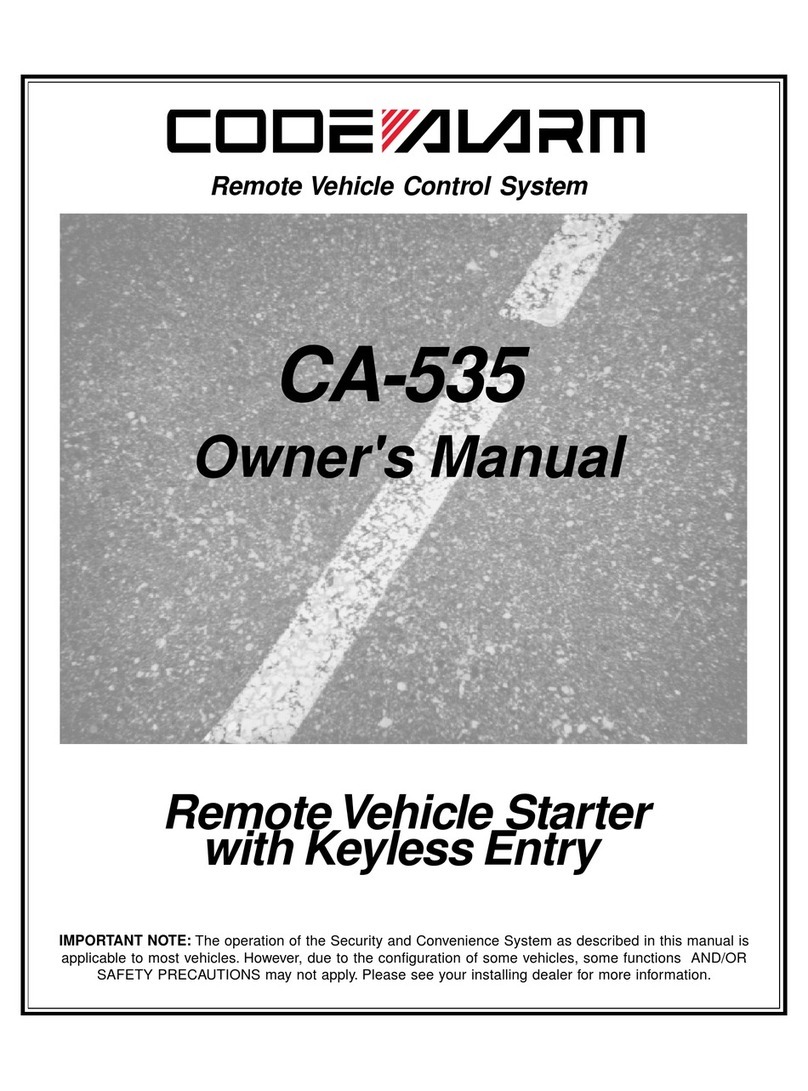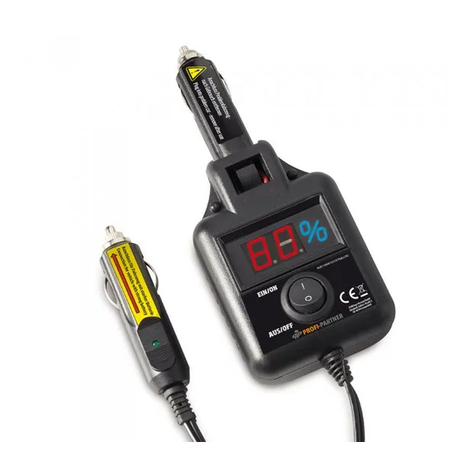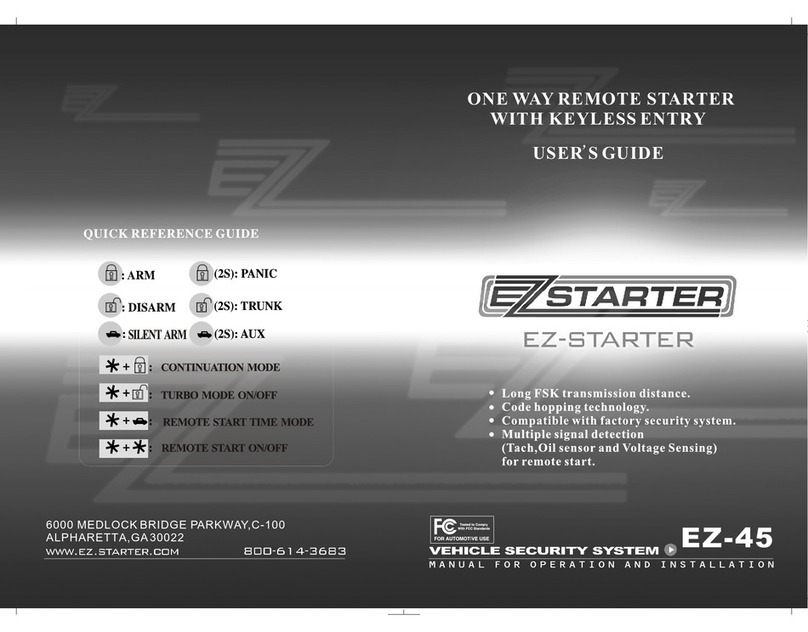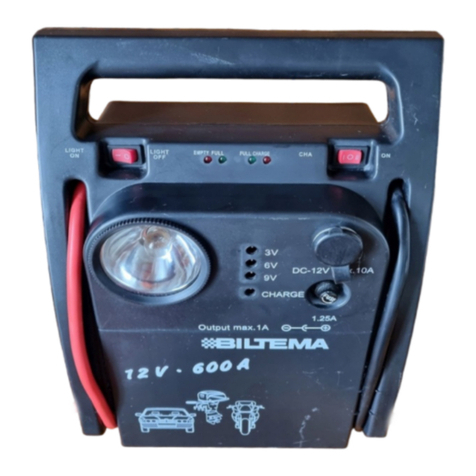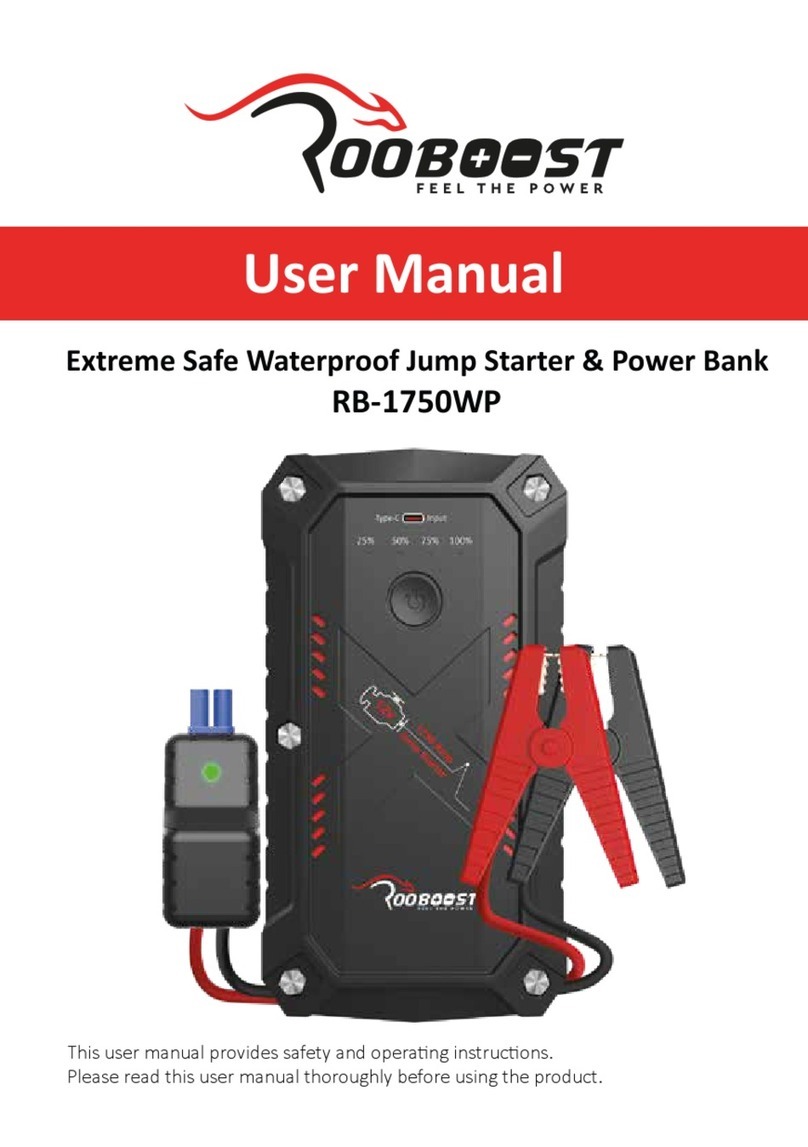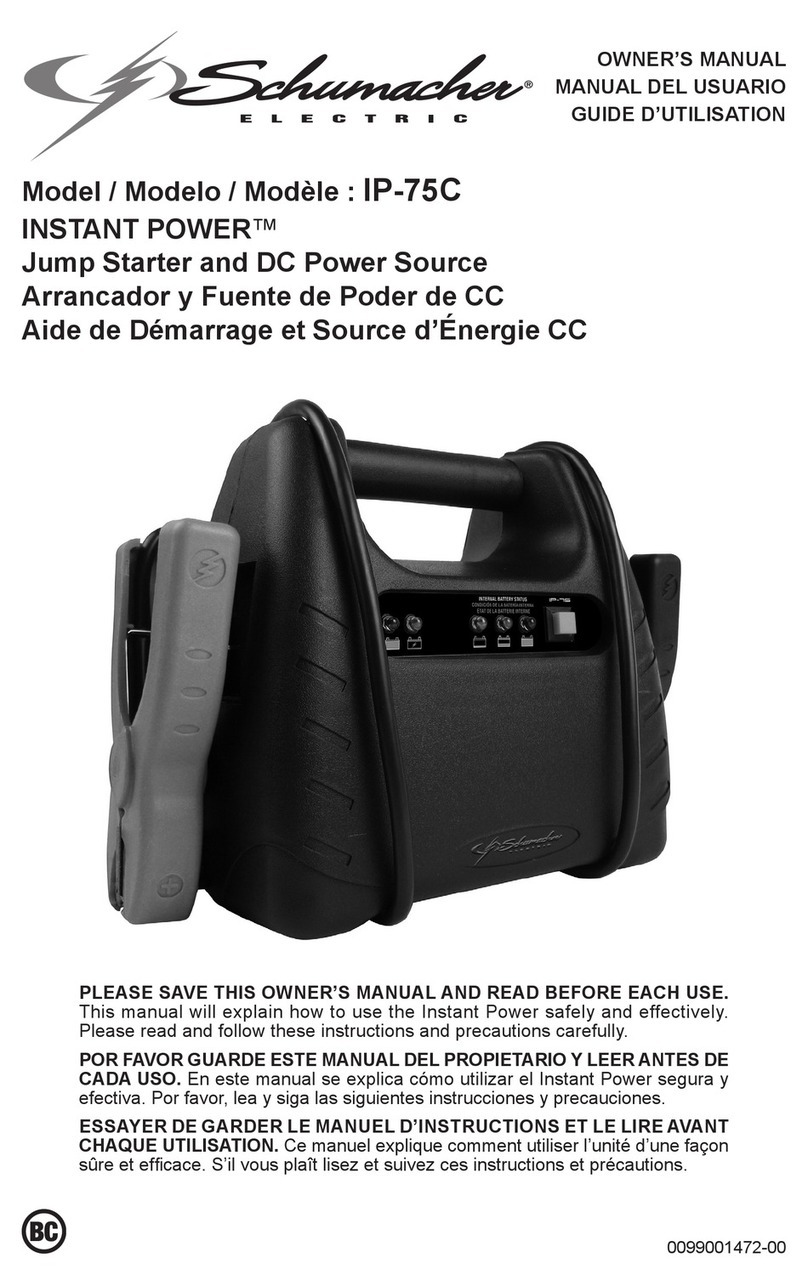6 7
utmost importance that each time before using the jump-starter you read this
manual and follow instructions exactly.
• To reduce the risk of battery explosion, follow these instructions and those
published by the battery manufacturer and manufacturer of any equipment you
intend to use in the vicinity of the battery. Review cautionary markings on these
products and on the engine.
CAUTION – TO REDUCE THE RISK OF INJURY OR PROPERTY DAMAGE:
• NEVER ATTEMPT TO JUMP-START OR CHARGE A FROZEN BATTERY.
• Vehicles that have on-board computerized systems may be damaged if vehicle
battery is jump-started. Before jump-starting, read the vehicle’s owner’s manual to
confirm that external-starting assistance is suitable.
• Never smoke or allow a spark or flame in vicinity of vehicle battery, engine or
power station
• Be extra careful to avoid dropping a metal tool onto the battery. It might spark or
short-circuit the battery or another electrical part and could cause an explosion.
• Jump-start procedures should only be performed in a safe, dry, well-ventilated area.
• Always store battery clamps when not in use. Never touch battery clamps together.
This can cause dangerous sparks, power arcing and/or explosion.
• When using this unit close to the vehicle’s battery and engine, stand the unit on a
flat, stable surface, and be sure to keep all clamps, cords, clothing and body parts
away from moving vehicle parts.
• Never allow red and black clamps to touch each other or another common metal
conductor — this could cause damage to the unit and/or create a sparking/
explosion hazard.
• If the clamps are connected incorrectly with regard to polarity, the backlit LCD
screen will display the Battery Status Icon, Battery Voltage Indicator, and the Clamp
Icons. The Alarm Icon, the “+” and ”–” signs and the Reverse Polarity Icons will
flash and the unit will sound a continuous alarm until the clamps are disconnected.
Disconnect the clamps and reconnect to battery with correct polarity.
• Always disconnect the negative (black) jumper cable first, followed by the positive
(red) jumper cable, except for positive grounded systems.
• Do not expose battery to fire or intense heat since it may explode. Before
disposing of the battery, protect exposed terminals with heavy-duty electrical tape
to prevent shorting (shorting can result in injury or fire).
• Place this unit as far away from the battery as cables permit.
• Never allow battery acid to come in contact with this unit.
• Do not operate this unit in a closed area or restrict ventilation in any way.
• This system is designed to be used only on vehicles with a 12 volt DC battery
system. Do not connect to a 6 volt or 24 volt battery system.
• This system is not designed to be used as a replacement for a vehicular battery. Do
not attempt to operate a vehicle that does not have a battery installed.
• Excessive engine cranking can damage a vehicle’s starter motor. If the engine
fails to start after the recommended number of attempts, discontinue jump-start
procedures and look for other problems that may need to be corrected.
• Do not use this jump starter on a watercraft. It is not qualified for marine applications.
• Although this unit contains a non-spillable battery, it is recommended that unit be
kept upright during storage, use and recharging. To avoid possible damage that
may shorten the unit’s working life, protect it from direct sunlight, direct heat and/
or moisture.
SPECIFIC SAFETY INSTRUCTIONS FOR INVERTERS
WARNING – TO REDUCE THE RISK OF ELECTRIC SHOCK:
• Do not connect to AC distribution wiring.
• Do not make any electrical connections or disconnections in areas designated as
IGNITION PROTECTED. This inverter is NOT approved for ignition protected areas.
• Never immerse the unit in water or any other liquid, or use when wet.
WARNING – TO REDUCE THE RISK OF FIRE:
• Do not operate near flammable materials, fumes or gases.
• Do not expose to extreme heat or flames.
CAUTION – TO REDUCE THE RISK OF INJURY OR PROPERTY DAMAGE:
• Disconnect appliance plug from inverter outlet before attempting any repairs to
the appliance.
• When an appliance plugged into this unit is used outdoors, use only extension
cords intended for use outdoors and so marked.
• Do not attempt to connect the inverter while operating your vehicle. Not paying
attention to the road may result in a serious accident.
• Always use the inverter where there is adequate ventilation.
• Always turn the inverter off when not in use.
• Keep in mind that this inverter will not operate high wattage appliances or
equipment that produce heat, such as hair dryers, microwave ovens and toasters.
• Do not use this inverter with medical devices. It is not tested for medical
applications.
• Operate inverter only as described in this Instruction Manual.
SPECIFIC SAFETY INSTRUCTIONS FOR THE USB PORT
• Do not insert foreign objects into the USB Port.
• Do not attach USB hubs or more than one personal electronic device to the USB Port.
• Some household USB-powered electronics will not operate with this unit.
SPECIFIC SAFETY INSTRUCTIONS FOR COMPRESSORS
CAUTION – TO REDUCE THE RISK OF INJURY OR PROPERTY DAMAGE:
Never leave the compressor unattended while in use.
WARNING – BURST HAZARD: Bursting articles can cause serious injury.
• Carefully follow instructions on articles to be inflated.
• Never exceed the recommended pressure listed in instructions on articles to be
inflated. If no pressure is given, contact article manufacturer before inflating.
• Monitor the pressure at all times on the pressure gauge.
CAUTION – TO REDUCE THE RISK OF PROPERTY DAMAGE:
Do not operate compressor continuously for longer than approximately 10 minutes,
depending on ambient temperatures, as it may overheat. This could damage the
compressor.
PERSONAL SAFETY
• When working with lead acid batteries, always make sure immediate assistance is
available in case of accident or emergency.
• Stay clear of fan blades, belts, pulleys, and other parts that can cause injury to
persons.
• Do not wear vinyl clothing when jump-starting a vehicle. Friction can cause
dangerous static-electrical sparks.
• Remove personal metal items such as rings, bracelets, necklaces and watches when
working with a lead acid battery. A lead acid battery can produce a short circuit
current high enough to weld a ring, or similar metal object, to skin, causing a
severe burn.
• Always have protective eyewear when using this product: contact with battery acid
may cause blindness and/or severe burns. Be aware of first aid procedures in case
of accidental contact with battery acid.
• Have plenty of fresh water and soap nearby in case battery acid contacts skin.
Skin: If battery acid contacts skin or clothing, wash immediately with soap and
water for at least 10 minutes. If redness, pain, or irritation occurs, seek immediate
medical attention.
Eyes: If battery acid comes in contact with eyes, flush eyes immediately, for a
minimum of 15 minutes and seek immediate medical attention.
LCD liquid crystal display: If liquid crystal comes in contact with your skin:
Wash area off completely with plenty of water. Remove contaminated clothing. If
liquid crystal gets into your eye: Flush the affected eye with clean water and then
seek medical attention. If liquid crystal is swallowed: Flush your mouth thoroughly
with water. Drink large quantities of water and induce vomiting. Then seek medical
attention.
SAVE THESE
INSTRUCTIONS
INTRODUCTION
Congratulations on purchasing your new Stanley®1400A Professional Digital
Power Station. Read this Instruction Manual and follow the instructions
carefully before using this unit.
OVERVIEW
Common Actions and Unit Responses
The following actions turn the unit on and activate the LCD screen:
Press the LED Area Light Power
Button. A beep will sound and the Area Light
will turn on. The backlight will turn
on for 10 seconds (only). The LCD
screen will continue to display the
Battery Status and Voltage Indicator.
The LED Area Light remains on until
switched off.
Press the Battery Status Button. A beep will sound and the backlit LCD
screen will display the Battery Status
and Voltage Indicator for 10 seconds
before the unit automatically turns off.
Press the AC/USB Power Button. A beep will sound and the backlit LCD
screen will display the Battery Status
Icon and the USB Icon; the Digital
Display shows “AC”, indicating the AC
Outlet and the USB charging port are
ready to use. The unit remains on until
the AC/USB Power Button is pressed
again to turn both off.
Press the Compressor Power
Button. A beep will sound and the backlit LCD
screen will display the Battery Status
and the Compressor Icon and will
alternately show the flashing pre-set
PSI value (that was last set using the
compressor pressure control buttons)
and the current pressure of the item
being inflated (which will light solid).
If no further actions are taken after
1 minute, the unit will display the
Battery Status and Voltage Indicator
for 10 seconds before automatically
turning off.
Whenever the clamps are properly
connected to a battery (refer to the
“Jump Starter” section) …
… a beep will sound and the backlit
LCD screen will display the Battery
Status Icon, Battery Voltage Indicator,
the Clamp Icons, and the “+” and ”–”
signs, as well as the flashing Jump
Starter Icon. The unit remains on until
the clamps are disconnected from the
battery.
If the Jump Starter Power Switch
is rotated to the on position and
the clamps are not connected to
a battery (refer to the “Jump Starter”
section) …
... a two-second warning will sound
every 10 seconds. The backlit LCD
screen will display the Battery Status
Icon, Battery Voltage Indicator, the
Clamp Icons, and the “+” and ”–” signs.
The Alarm Icon and the Jump Starter
Icon will flash. The unit remains on
until the Jump Starter Power Switch
is switched off and then displays the
Battery Status Icon and the voltage of
digital display for 10 seconds before
automatic shut down.
If the clamp connections to the
battery’s positive and negative
terminals are reversed …
… the backlit LCD screen will display
the Battery Status Icon, Battery Voltage
Indicator, and the Clamp Icons. The
Alarm Icon, the “+” and ”–” signs and
the Reverse Polarity Icons will flash
and the unit will sound continuously
until the clamps are disconnected from
the battery.
When the unit is charging or
recharging using the built-in
120 Volt AC Charger (refer to the
“Charging/Recharging” section) …
… a beep will sound and the backlight
will turn on for 10 seconds (only). The
LCD screen will continue to display the
Battery Status Icon and Battery Voltage
Indicator. The bars on the Battery Status
Icon will change from empty to solid
(bottom to top) repeatedly.
Note: The unit will automatically power off once ALL the functions are turned off.
VIEWING BATTERY STATUS
To check the unit’s battery charge level, press the Battery Status Button. The Battery
Icon will indicate the battery charge level as follows:
• If the battery charge level is at full capacity, four solid bars will display.
• If the battery is partially charged, two or three solid bars will display.
• If the battery is nearly empty, one solid bar will display. The unit should be
charged at this time.
• If the battery is completely empty, four blank bars will display. The unit MUST be
charged at this time or the unit’s built-in low voltage protection will activate. The
empty Battery Status Icon will flash for a short period of time before automatic
shut down. The unit will not operate until the battery is recharged.
CHARGING/RECHARGING
Lead-acid batteries require routine maintenance to ensure a full charge and long
battery life. All batteries lose energy from self-discharge over time and more
rapidly at higher temperatures. Therefore, batteries need periodic charging to
replace energy lost through self-discharge. When the unit is not in frequent use,
manufacturer recommends the battery should be recharged at least every 30 days
and after each use.
Notes: This unit is delivered in a partially charged state – you must fully charge it before using it for the first
time. Initial AC charge should be for 40 hours or until the Battery Status Icon shows 4 solid bars.
Recharging the battery after each use will prolong battery life; frequent heavy discharges between
recharges and/or overcharging will reduce battery life.
The battery can be recharged using the built-in 120 Volt AC Charger.
Make sure all other unit functions are turned off during recharging, as this can slow the recharging
process.
NOTICE – RISK OF PROPERTY DAMAGE: Failure to keep the battery charged
will cause permanent damage and result in poor jump starting performance.
IMPORTANT: If you know the unit is discharged, but the battery icon displays four
solid bars as if the unit is fully charged when connected to a charging power source,
this may be due to the internal battery having high impedance. The manufacturer
suggests leaving the unit charging for a period of 40 hours using the built-in AC
charger before use.
Charging/Recharging Using the Built-In 120 Volt AC
Charger and AC Extension Cord (not included)
1. Lift the protective cover of the built-in 120 volt AC charger located on the
lower left front of the unit (refer to the Features section to locate). Connect
an extension cord to the unit. Plug the other end of the cord into a standard
120-volt AC wall outlet. When the unit is properly connected to an AC power
source, the LCD screen will display the following (the screen will be backlit):
The bars on the battery icon represent the capacity level of the unit’s internal
battery. After 10 seconds, the backlight will shut off.
The bars on the battery icon will change from empty to solid (bottom to top)
repeatedly to indicate the unit is charging.
2. Charge for approximately 40 hours or until the battery icon shows 4 solid bars.
3. When charging is complete, unplug the AC extension cord from the AC outlet
and then disconnect it from the unit.
Note: The unit cannot be overcharged using this method.
JUMP-STARTER
This unit is equipped with a jump starter power switch that allows energy to flow
only when proper connections are made to battery and frame.
a) For negative-grounded systems, connect the positive (red) clamp to the positive
ungrounded battery post and the negative (black) clamp to the vehicle chassis
or engine block away from the battery. Do not connect the clamp to the
carburetor, fuel lines or sheet-metal body parts. Connect to a heavy gauge
metal part of the frame or engine block.
b) For positive-grounded systems, connect the negative (black) clamp to the
negative ungrounded battery post and the positive (red) clamp to the vehicle
chassis or engine block away from the battery. Do not connect the clamp to
the carburetor, fuel lines or sheet-metal body parts. Connect to a heavy gauge
metal part of the frame or engine block.
IMPORTANT: Make sure the Compressor Power Button has been turned off before
attempting to use the unit as a Jump Starter.
WARNING – TO REDUCE THE RISK OF INJURY OR PROPERTY DAMAGE:
• FOLLOW ALL SAFETY INSTRUCTIONS FOUND IN THE “Specific safety
instructions for jump starters” section of this instruction manual.
• Never touch red and black clamps together – this can cause dangerous sparks,
power arcing, and/or explosion.
• If the clamps are connected incorrectly with regard to polarity, the unit will sound
a continuous alarm until the clamps are disconnected. The backlit LCD Screen will
display the Battery Status Icon, the Battery Voltage Icon and the Clamp Icons. The
PPRH7DS _Type2_ManualENSP_071921.indd 6-7PPRH7DS _Type2_ManualENSP_071921.indd 6-7 7/19/2021 11:10:59 AM7/19/2021 11:10:59 AM
